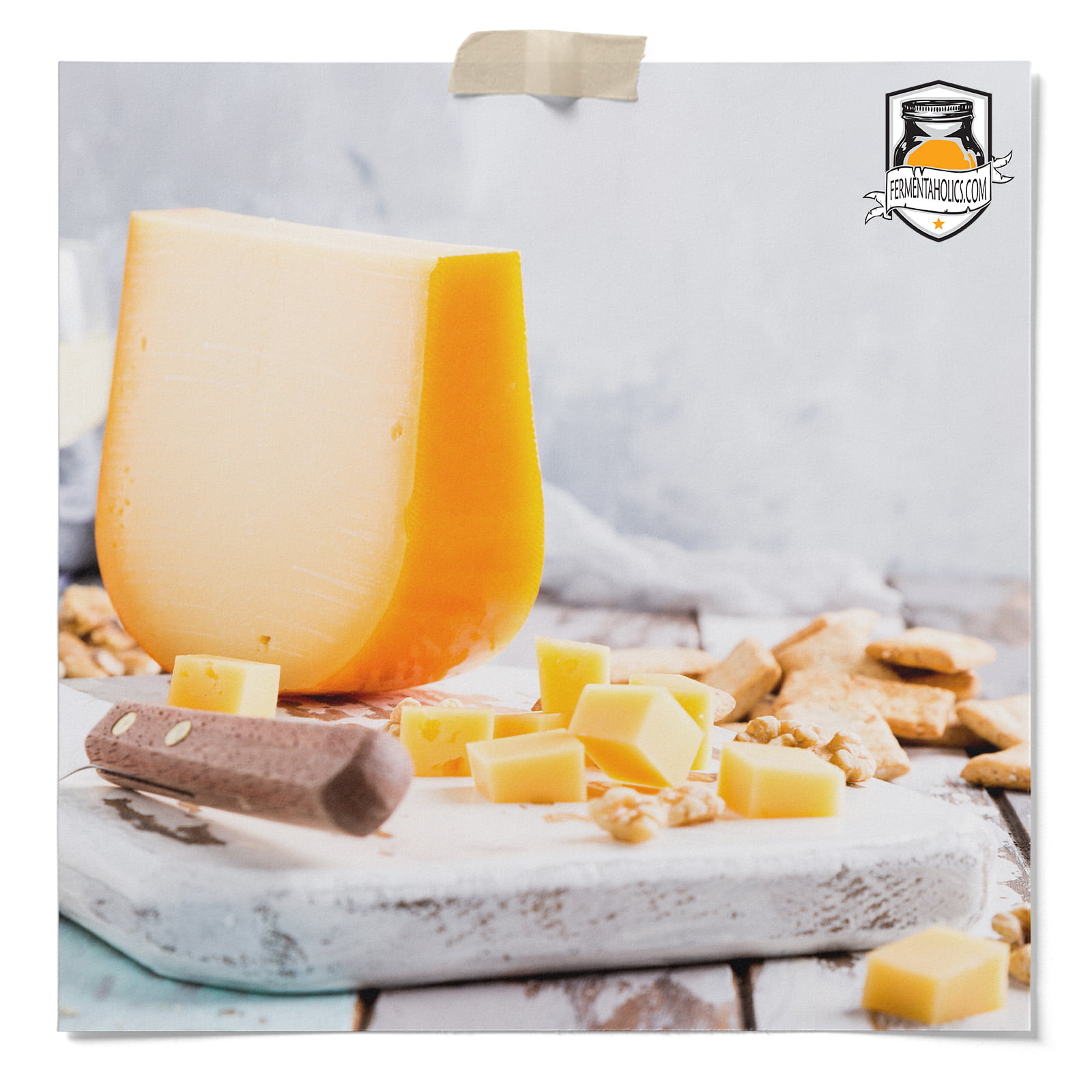
Cheddar cheese gets its distinctive characteristics from the cheesemaking process called “cheddaring,” which is where the name comes from and what sets it apart from other types of cheeses. Cheddaring involves cutting the curds into cubes, stacking them, and then turning and restacking them at regular intervals. This process helps to expel more whey, resulting in a firmer, drier cheese with a concentrated flavor and smooth texture. Additionally, it is often aged for a few months to a few years, which further enhances its flavor and texture.
What are the defining characteristics that make cheddar, cheddar? Let’s dive in.
Cheddar cheese is most notably defined by its unique nutty flavor and tartness, which become more pronounced with age. Different aging periods then determine the various types of cheddar, from mild to extra sharp.

Cheddars, aged for multiple years, continue to develop their character and become more intriguing. Crystals can also form during this time, adding a welcomed textural contrast.
Age is not the only factor determining flavor and texture. Fermentation temperature, pH, salt percentage, and affinage can all contribute to creating a unique end product with a variety of flavors and textures.
The unique tangy flavor of cheddar begins with a technique originating in its namesake village of Cheddar, England.
The Cheddaring process is an extended fermentation of the curd to develop acidity. After cooking and draining the curds, the whey is drained from the pot and the curds are allowed to knit together and lactic acid bacteria continue to ferment and lower the pH. The curds are traditionally stacked and flipped during this time to expel more whey evenly and speed up acidification. The acidity and moisture content are key to the cheese’s texture and flavor development as it ages.
2
lbs4
Hours3 - 6
Months2 Gallons Whole Milk (NOT Ultra-pasteurized; pasteurized is OK)
1 Packet SemiSet Cheesemaking Culture or comparable medium-hard cheese Mesophilic Cheese Culture
1/2 teaspoon Liquid Calcium Chloride dissolved in 1/4 cup filtered water (Optional but recommended if using pasteurized milk)
Rennet of choice dissolved in 1/4 cup filtered water (choices with measurements below - Only Choose One)
5 Tablespoons of Cheese Salt
Cheese Wax or materials for other preferred protective covering.
Large pot - big enough to hold 2 gallons of milk (Not aluminum)
Thermometer
Long Knife
Large Slotted Spoon
Strainer
Cheesecloth
Cheese Mold & Press
Measuring Spoons
Curd won't consolidate - This can happen if the curds expel too much whey during the cooking process. At this point, it's best to break the curds apart and enjoy them as cheese curds! To prevent this next time, stir less frequently, and be careful with how quickly the temperature rises during the cook. Also, consider the size of your curds initially. If they were on the smaller side, you can increase the size a bit next round for more moisture retention.
